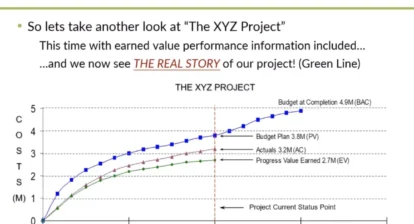 Companies are always developing, implementing and refining strategic plans. However, many don’t realize their vision and fail to deliver expected strategic results. Why? One reason is because executive leadership frequently repeats the strategic planning cycle without including lessons learned from previous planning cycles. Therefore, they continue not to succeed. Tracking appropriate program performance metrics per cycle improves planning and doesn’t rely on hope alone that the next strategic planning session will bring better results. How can you ensure that your organization’s strategic plans have a better chance of succeeding? Here are three critical guidelines to keep in mind.
Companies are always developing, implementing and refining strategic plans. However, many don’t realize their vision and fail to deliver expected strategic results. Why? One reason is because executive leadership frequently repeats the strategic planning cycle without including lessons learned from previous planning cycles. Therefore, they continue not to succeed. Tracking appropriate program performance metrics per cycle improves planning and doesn’t rely on hope alone that the next strategic planning session will bring better results. How can you ensure that your organization’s strategic plans have a better chance of succeeding? Here are three critical guidelines to keep in mind.
Guideline 1: Recognize the Strategic Value of Your Project
Project managers need to remind themselves that every project must contribute value and meet clients’ future needs. The key word is “value.” From a management standpoint, it’s essential to relate the value of the project to the corporate strategy in both quantitative and qualitative terms. Everyone would agree that the most successful companies have a corporate strategy. Unfortunately, few project managers take the time to understand the value linking the corporate strategy and the project planning. You must restate the final approach in more qualitative “business terms” so the client has a clear understanding of the “value” in their choice.
Guideline 2: Inform Clients of Potential Value Gained or Lost
It’s important for the project manager to help the client recognize the risks associated in selecting one alternative over another. They could even come to the table with preconceived notions based on cost and/or ease of implementation. These choices can be risky. It’s your responsibility to provide them with the data to make reasonable decisions to ensure they meet their mission.
When informing a client about risks, be quick and competent in your response. Have a response strategy as a consideration? You never want to rely on the client for direction because that is why you are there. Be a forward thinker and “be prepared.” Here’s how to provide the appropriate direction:
- Schedule a 30-minute brainstorm session with no more than two subject matter experts.
- Clearly understand the technical aspects of all options. Draft (in business terms) a clear response to the client.
- After gathering your thoughts, arrange a meeting with the client and invite no more than one SME (to make the client feel important yet not threatened) to present your response.
The key is to give the client the perception that you’re working with them to address business needs.
Guideline 3: Ensure Success through Participation
The project manager must actively engage the client and create an environment where the client is a key participant in decision-making. Far too often, the project team will go behind closed doors, have little or no interaction with the client, and then return to the client with the supposed perfect solution. To align projects with the corporate strategy, create an open and honest dialogue. Make sure the client knows you want to include them in determining the approach that best aligns with the company’s strategy. For example, explain how you held a 30-minute brainstorming session with the SMEs to obtain a clear understanding of all-technical options and the pros and cons of each option.
Remember to speak in business terms that make sense to everyone listening. Ensuring integration of organizational strategy with projects lies in the company’s ability to create a process that’s open, transparent and institutionalized. As project managers, we have a responsibility to create an environment with our client that’s open and honest.
Make Strategy Your Concern
The outcome of effectively recognizing, brainstorming, understanding and responding to client requests results in:
- Clearer organizational focus.
- Best use of scarce organizational resources such as people, equipment and capital.
- Improved communications across projects and departments.
No matter what tools you use as a project manager, be competent and well informed when working with the client to ensure successful alignment between the company’s organizational strategy and the project.
A version of this article originally appeared on the Edwards Performance Solutions blog here.






